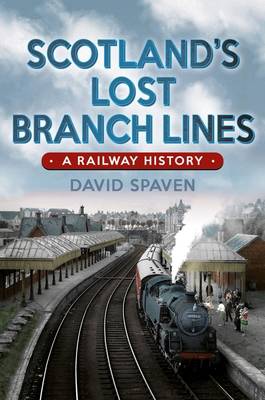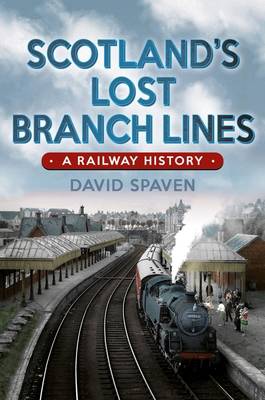
- Afhalen na 1 uur in een winkel met voorraad
- Gratis thuislevering in België vanaf € 30
- Ruim aanbod met 7 miljoen producten
- Afhalen na 1 uur in een winkel met voorraad
- Gratis thuislevering in België vanaf € 30
- Ruim aanbod met 7 miljoen producten
Zoeken
€ 48,45
+ 96 punten
Omschrijving
The infamous 'Beeching Axe' swept away virtually every Scottish branch line in the 1960s. Conventional wisdom viewed these losses as regrettable yet inevitable in an era of growing affluence and rising car ownership.
This ground-breaking study of Dr Beeching's approach to closures has unearthed - from rarely or never previously referenced archive sources - strong evidence of a 'stitch-up', ignoring the scope for sensible economies and improvements which would have allowed a significant number of axed routes to survive and prosper. Acclaimed railway historian David Spaven traces the birth, life and eventual death of Scotland's branch lines through the unique stories of how a dozen routes lost their trains in the 1960s: the lines to Ballachulish, Ballater, Callander, Crail, Crieff /Comrie, Fraserburgh, Kelso, Kilmacolm, Leven, Peebles, Peterhead and St Andrews.
He concludes by exploring a potential renaissance of branch lines, propelled by concerns over road congestion, vehicle pollution and the climate emergency.
This ground-breaking study of Dr Beeching's approach to closures has unearthed - from rarely or never previously referenced archive sources - strong evidence of a 'stitch-up', ignoring the scope for sensible economies and improvements which would have allowed a significant number of axed routes to survive and prosper. Acclaimed railway historian David Spaven traces the birth, life and eventual death of Scotland's branch lines through the unique stories of how a dozen routes lost their trains in the 1960s: the lines to Ballachulish, Ballater, Callander, Crail, Crieff /Comrie, Fraserburgh, Kelso, Kilmacolm, Leven, Peebles, Peterhead and St Andrews.
He concludes by exploring a potential renaissance of branch lines, propelled by concerns over road congestion, vehicle pollution and the climate emergency.
Specificaties
Betrokkenen
- Auteur(s):
- Uitgeverij:
Inhoud
- Aantal bladzijden:
- 320
- Taal:
- Engels
Eigenschappen
- Productcode (EAN):
- 9781839830198
- Verschijningsdatum:
- 3/05/2022
- Uitvoering:
- Hardcover
- Formaat:
- Genaaid
- Afmetingen:
- 160 mm x 240 mm
- Gewicht:
- 722 g

Alleen bij Standaard Boekhandel
+ 96 punten op je klantenkaart van Standaard Boekhandel
Beoordelingen
We publiceren alleen reviews die voldoen aan de voorwaarden voor reviews. Bekijk onze voorwaarden voor reviews.











